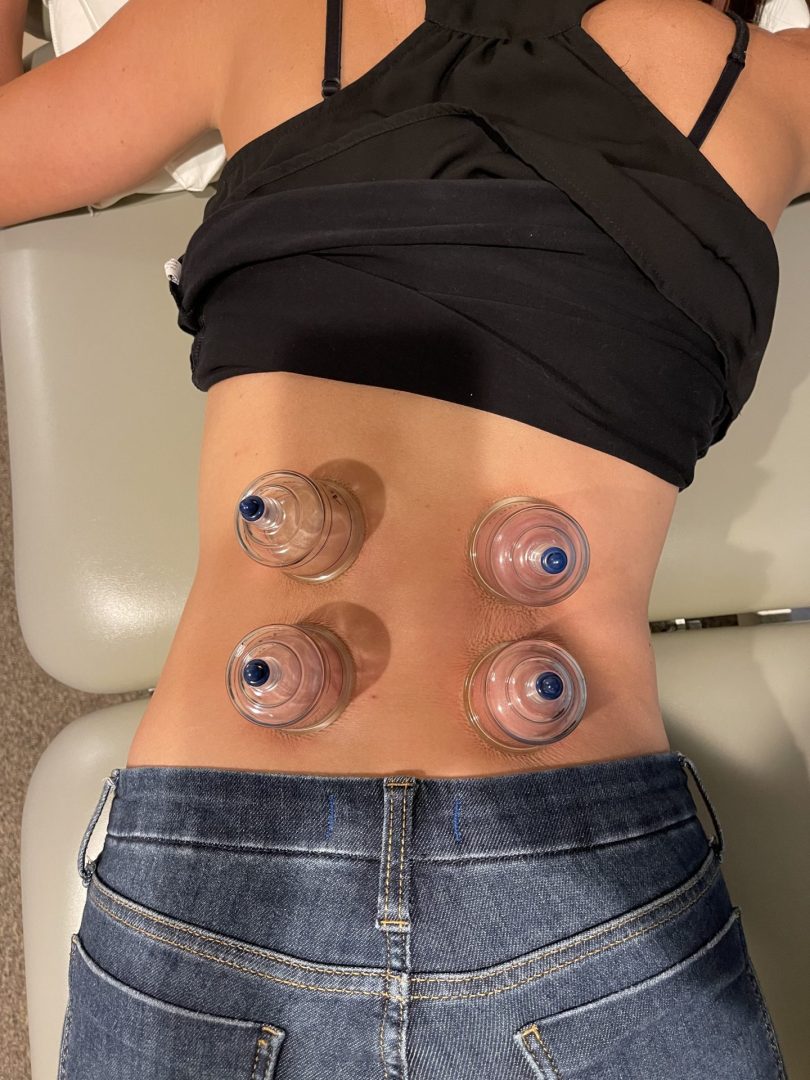Have you ever noticed circular bruises on someone’s legs, arms or back? These bruises are most likely the result of cupping therapy, a form of alternative medicine that offers a variety of benefits.
But what exactly is cupping therapy? How does it work? What is it used for? And what can you expect after a cupping therapy session?
In this article, we’ll take a closer look at cupping therapy, including its benefits and what you can expect after a session.
What is Cupping Therapy & How Does it Work?
Cupping therapy is an ancient form of alternative medicine in which cups are placed on the skin to create negative pressure through suction. Suction helps with pain, inflammation, blood flow, relaxation, and well-being, among other things.
It is a technique that is becoming more popular in modern medical practices. Cupping directs the circulation of blood to specific areas of the body to increase oxygenation and promote healing.
Cupping therapy is thought to date back to around 1550 BC when it was first used in Egypt. Since then, it has been used in various cultures for a variety of purposes.
Cupping therapy is typically done using glass, bamboo, or silicone cups. The therapist will place the cup on the skin and then use a suction device to create a vacuum.
This vacuum will cause the skin and underlying tissue to rise into the cup. The cups are usually left in place for 5-20 minutes, although this will depend on the purpose of the therapy.
In a world where we are constantly on the go, it can be easy to forget to take care of our bodies. Cupping therapy is one way to help improve your health and well-being.
The Benefits of Cupping Therapy
Cupping therapy is said to offer a variety of benefits, including:
Pain relief: Cupping therapy is said to help with pain, including back pain, neck pain, and muscle soreness. This is thought to be due to the suction created by the cups, which can help to loosen muscles and relieve pain. Scar tissue deep within the muscle tissue can also be broken up by cupping therapy, which can help to reduce pain and improve the range of motion.
Inflammation: The suction created by cupping therapy can help to reduce inflammation. This can be beneficial for those with conditions such as arthritis or fibromyalgia.
Blood flow: Cupping therapy improves blood circulation close to the area where the cups are placed. This is due to the suction, which helps to open up blood vessels and improve blood flow. This increased blood flow can help to reduce pain, speed up healing and improve cell function.
Relaxation: Cupping therapy is relaxing and can help to reduce stress and promote well-being. The deep tissue massage provided by cupping therapy can also help to relax muscles and relieve tension.
What is Cupping Therapy Used For?
Cupping therapy is most commonly used for pain relief, but it can also be used for other purposes, such as:
Muscle soreness: Cupping therapy can help to relieve muscle soreness, including that caused by exercise.
Arthritis: The suction created by cupping therapy can help to reduce inflammation and pain in people with arthritis.
Blood disorders: Cupping therapy is said to help with blood disorders, such as anemia. This is thought to be due to the improved blood circulation that cupping therapy provides.
Migraines: The intensity of migraines can be reduced by cupping therapy. It is a promising alternative to medication for people who suffer from migraines.
Digestive disorders: Cupping therapy aids in peristalsis, which is the movement of food through the digestive tract. This can help to relieve constipation and other digestive disorders.
What to Expect After Cupping Therapy?
Cupping therapy can cause some side effects, which are usually temporary and not harmful. These side effects include:
Bruising
Cupping therapy can cause bruising, which is a common side effect. The bruises are usually harmless and will fade within a few days. A topical bruise cream can be used to help reduce the appearance of bruises. With cupping therapy, the bruises are usually small and round, and they are not painful.
Petechia
Cupping therapy can also cause petechia, which are small red or purple dots on the skin. Petechia is caused by broken blood vessels and is a common side effect of cupping therapy. These dots are harmless and will fade within a few days. Do not worry if you see petechia after your cupping therapy session, as it is perfectly normal.
Redness
The skin may appear red after cupping therapy. This is normal and will fade within a few days. While the skin is red, it is important to avoid exposure to sunlight or heat. This is because the skin will be more sensitive to these things.
Swelling
Cupping therapy can also cause swelling. This is usually only temporary and will go away within a few days. If you experience swelling, it is important to rest and avoid strenuous activity. This will help to reduce the swelling.
Discoloration
The skin may also appear discolored after cupping therapy. This is due to the bruising and is perfectly normal. The discoloration will fade within a few days.
How Often Can You Do Cupping Therapy
Cupping therapy can be done as often as necessary. For most people, cupping therapy is done once a week. However, if you are using cupping therapy for pain relief, you may need to do it more often. Some people find that they need cupping therapy two to three times a week to get relief from their pain.
Is Cupping Therapy For You?
If you are looking for an alternative or complementary therapy to help with pain relief, cupping therapy may be right for you. Cupping therapy is safe and has few side effects. It is also relatively inexpensive.
Cupping therapy is a promising alternative to medication for pain relief. It is also effective for other conditions, such as muscle soreness, arthritis, and fibromyalgia. If you are interested in trying cupping therapy, talk to your healthcare provider to see if it is right for you.

